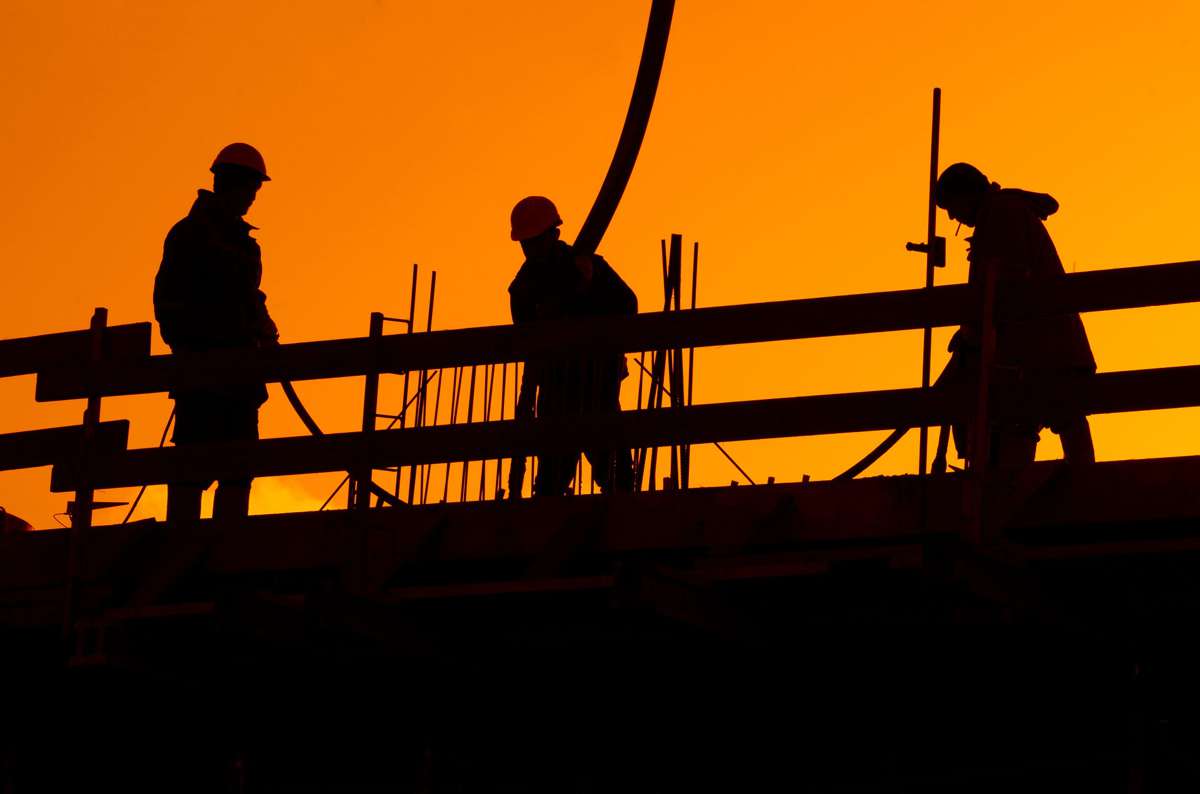The keys to implement better communication at your construction site
When you think of needed skills in construction, communication likely doesn’t top the list. That general misunderstanding is an issue across the industry. While it may seem inconsequential on the surface, worksite communication is a critical part of the job.
Studies show that 80% of the workforce in the U.S. feels stressed because of poor company communication. Of those workers, 70% report feeling overwhelmed. That’s a substantial obstacle for any business, but in an industry as time-sensitive and error-prone as construction, it’s even more severe.
Why Is Worksite Communication Important?
Poor worksite communication leads to errors, delays, safety incidents and frustration. A 2018 study found that the resulting rework, conflict resolution and data searching costs more than $177 billion annually. By contrast, effective communication practices on the job site could help teams maximize productivity and safety.
Workers on the physical worksite are the first to encounter a problem if one arises during a project. Consequently, construction companies that report these issues quickly and clearly can address the problem sooner, saving time and preventing delays. Even small setbacks could considerably impact productivity if no efficient communication channel exists.
That’s an issue considering the current state of the construction industry. Fewer than 30% of construction businesses say they always complete projects on time and within budget. Almost all firms have come to expect delays, but it doesn’t have to be that way. Better worksite communication could help.
In the same survey, nearly 70% of contractors said poor job site coordination causes budget and schedule overruns. Considering that 80% say on-site coordination is challenging, it’s easy to see how this can become such a widespread problem.
Thankfully, it’s possible to move past these widespread issues. Here are 10 keys to implementing better on-site communication.
1. Establish a Chain of Command
One of the first steps you should take toward better communication is establishing a clear chain of command. Workers should know who to report to for every issue. That way, information gets to who needs it as efficiently as possible. This chain should follow a consistent hierarchy to prevent confusion.
Individual team members should report to team leaders, who report to subcontractors, who report to general contractors, who report to the project manager, who reports to any other stakeholders. You may need to organize multiple chains to keep communication within specific teams or departments.
Ensure everyone understands the chain of command, establishing a point of contact for each worker. When an issue or question arises, employees should go to their specific point of contact, who can go to theirs if they need help. This organization will streamline communication and reduce wasted time.
2. Keep Messages Concise
It’s important to keep things concise when talking with other people on the worksite. Everyone may have a different takeaway if you give more information than necessary, causing confusion down the road. Similarly, employees may struggle to see the point or the most important data when there’s too much to sort through.
Staying concise helps communicate everything you need and nothing you don’t. Before speaking or writing a message, quickly organize your thoughts to avoid struggling to get to the point. Lead with the main idea, then explain details as necessary, but only include items that make a difference.
Remember that different audiences will require various amounts of information. For example, a new worker will probably need more details than an industry veteran, so it’s OK to explain more to them. A good rule of thumb is to be as concise as possible, then ask if they need any more explanation.
3. Match Messages the Appropriate Method
Technology today provides multiple options for communication, but not all are ideal for every situation. You’ll have to choose the best platform for each message if you want to communicate as effectively as possible. Making those choices starts with an understanding of each method’s strengths and weaknesses.
Talking face-to-face is always the best option if possible since at least 55% of communication is nonverbal. You may have to rely even more on nonverbal cues on a noisy construction site. Creating a formal, organized system of hand gestures or using easy-to-see physical signals like flags and lights can help.
Email is excellent for quick, nonurgent messages, but it may be better to call if something is time-sensitive or hard to explain in a few paragraphs. Project collaboration software is ideal for updates that require context, and some options include real-time alerts to help with time-sensitive issues.
4. Ensure Conversations Are Two-Sided
Another crucial consideration for effective communication is keeping conversations two-sided. It can be easy to dominate the conversation when trying to make your point clear, but this is counterproductive. If workers aren’t actively involved, the lack of engagement could lead to poor understanding.
Leave space for people to respond when you’re talking. It helps to ask questions, too, since some workers may not speak unless they feel the other party wants them to. Be an active listener when someone else is talking, ask questions when you need clarification and even take notes if necessary.
Save any questions for when someone finishes talking. You want to be an engaged listener, but you don’t want to interrupt them, as this can come across as rude and disrupt the conversation. They may answer your question before you ask it as they explain, too.
5. Avoid Jargon and Complicated Language
It can be easy to rely on jargon in a sector with as many industry-specific terms and phrases as construction. While industry veterans in the same area may understand you when using these terms, not everyone will. Using too much niche language like this can make it difficult to understand you, so it’s best to avoid it.
The same concept applies to complicated language. Try to avoid using long words and complex sentences, especially in written messages, as this can make it hard to understand. Remember that your goal is to communicate your thoughts as quickly and clearly as possible, not to impress anyone with your vocabulary.
Keeping your language simple can also help you remain more concise. Some industry-specific terms or complicated ideas may be unavoidable in some circumstances, so when that happens, ask to make sure everyone understands what you’re saying.
6. Use Visuals Where Applicable
It can be hard to communicate some ideas, even with forethought and concise, simple language. Some concepts are hard to describe, construction sites can be loud and people may use different terms for the same thing. You can work around this by using visuals.
Pictures, graphs, blueprints and other visual media are some of your best resources for making your point clearly and quickly. People remember just 20% of what they read, but 80% of what they see. Similarly, the brain processes visuals 60,000 times faster than text. You can express your point far faster and more quickly if you include visuals.
Of course, visual communication isn’t always an option. In things like project updates and pre-project planning, though, you’ll have time to design, compile or find relevant visuals. Use these to your advantage to help people understand you.
7. Embrace the IoT
New technologies can also help streamline communication on the worksite. The Internet of Things (IoT) often provides the fastest way to send and receive information. These small, wireless connected devices can monitor crucial data points and send real-time alerts, helping relevant parties stay on top of things.
For example, smart helmets can warn wearers about nearby hazards by monitoring air quality, temperatures and more. Similar solutions can track health indicators like body temperature and heart rate, alerting workers and their managers when they need a break to avoid injury. This instant communication helps prevent accidents by keeping everyone informed in real-time.
Construction companies will have even more potential use cases for these tools as IoT technology improves. It helps to apply them wherever possible since these devices can communicate far faster than manual systems.
8. Standardize Communication
All the communication options modern technology provides can be helpful, but this variety also presents an obstacle. People may use different systems to communicate, which can quickly make conversations muddled and hard to track. You can prevent this by standardizing communication.
First, decide which form of communication is best for each task or question. Then, establish a standard system that all employees use. For example, everyone could use project management software for general updates, emails for specific, non-time-sensitive questions and instant messaging for real-time information.
The specifics will vary depending on your team’s needs, budget and preferences. The important thing is to ensure everyone uses the same platform for the same types of communication. That way, you avoid confusion and having to repeat yourself.
9. Look for Communication Skills When Hiring
One area in improving communication that can easily be overlooked is the hiring process. Technical skills and experience in construction processes are the most important factors to consider, but you shouldn’t ignore communication skills. A worker who can say what they mean concisely and clearly is someone you want on your team.
The inverse is also true. If workers can’t communicate or listen well, they’ll likely hold the rest of your workforce back. Consider that one bad hire costs 30% of their first-year earnings on average. Communication is such an integral part of productivity and can be the difference between a good and bad hire.
Applicants in this industry probably won’t list communication skills on their resumes. Still, you can gauge these abilities while interviewing them. Look for workers who listen actively, speak with intention and provide plenty of information without rambling.
10. Prepare for Bilingual Communication
You should prepare to work with a multilingual workforce. According to a 2019 survey, construction has the highest foreign language skills gap of any industry. It exists because many skilled workers in the sector primarily speak a language that managers in the industry don’t.
Management should anticipate working with language barriers since this is such a prevalent factor. Hiring bilingual workers who can translate will help, but translating every message is inefficient. You can shorten the impact of language barriers and remain efficient by keeping communication as simple and nonverbal as possible.
Off-site language training can help, too. Encourage workers to learn the languages their colleagues speak, possibly even covering the cost of classes. Instant translation apps can also help as technology advances.
Construction Sites Need Better Communication
On-site communication plays a considerable role in construction’s widespread productivity problem. Moving past these issues can help you overcome the cost, safety and time obstacles that plague the industry.
These 10 steps can help any construction team communicate more effectively. You can then enjoy the benefits of a more cohesive, productive workforce that works efficiently together as a team.















